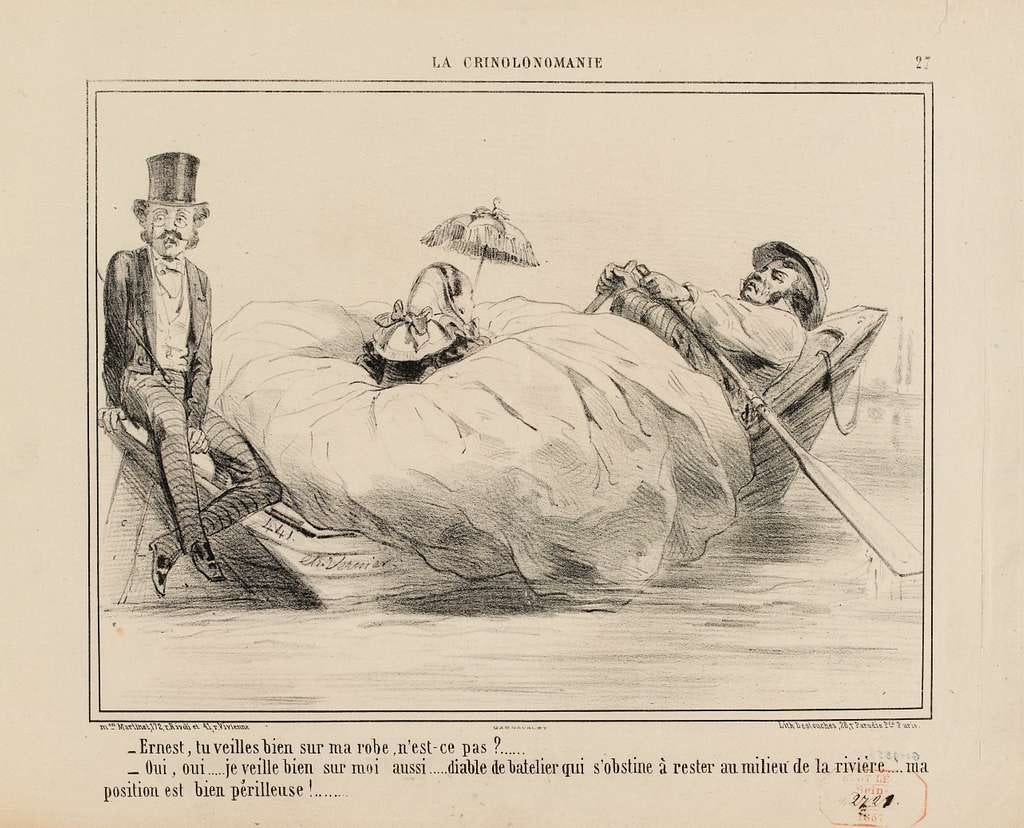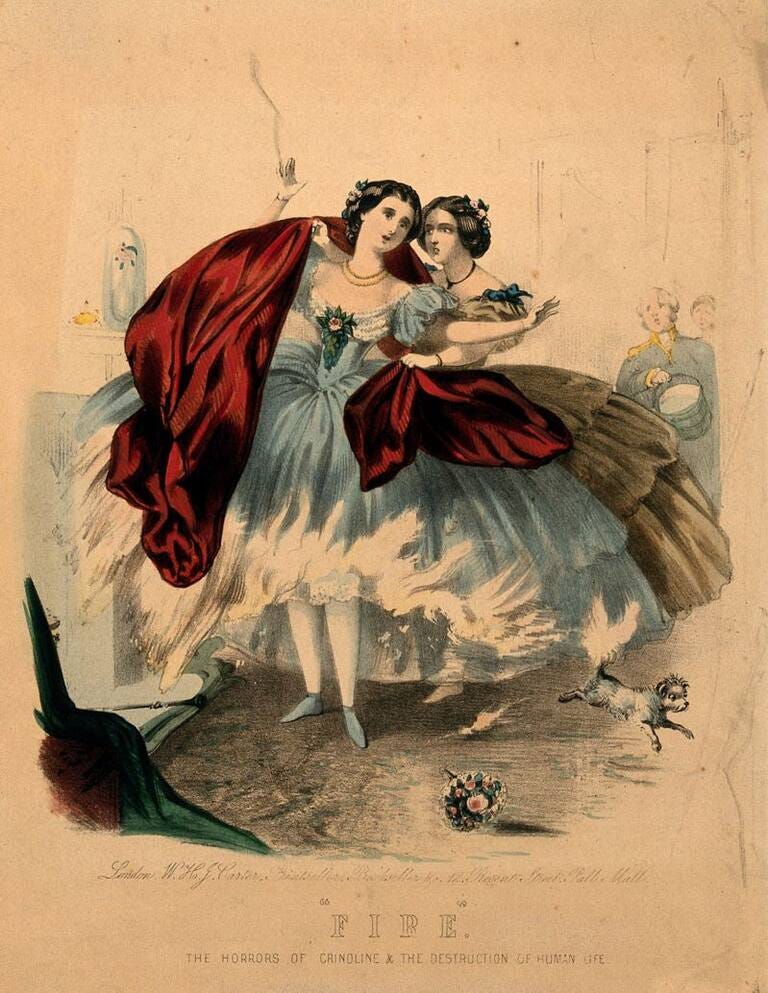The Crinoline Uncovered: Fashion’s Revolutionary Layers and Hidden Dangers
When fashion turned fatal: the hidden dangers behind 19th-Century trends.
A few months ago, for my birthday, I treated myself to a dress. Not my typical choice, it was the perfect little black dress, complete with a corset that fit like a glove and a velvet skirt. The only issue? A tulle crinoline that added more volume than I wanted. So, putting my fashion degree to good use, I carefully unpicked it. This experience got me thinking about the origins and lesser-known secrets of this iconic 19th-century garment.
Let’s travel back to 1856 when a Frenchman named R.C. Milliet patented the steel-hooped cage crinoline. His innovative design featured a lightweight framework made from materials like whalebone, steel, or cane, which allowed for the bell-shaped silhouette without the cumbersome layers of heavy petticoats. Around the same time in America, inventor W.S. Thomson patented his own version, using steel hoops to create a flexible and durable structure.
Crinoline in cotton and metal, 1860-1870. Collection MoMu - ModeMuseum Provincie Antwerpen, all rights reserved
The Industrial Revolution played a key role in the crinoline’s mass production, making it more affordable and accessible to a wider range of women, not just the wealthy elite. Crinolines could reach up to six yards in circumference, and their exaggerated size and rigidity made them a subject of both fascination and criticism.
Caricatures and illustrations of the time often depicted fashionable women in outrageous scenarios, their enormous crinolines causing all sorts of trouble. These exaggerated scenes, however, hinted at a darker reality. Tragically, thousands of women in the mid-19th century lost their lives when their crinolines caught fire. The wide skirts also posed other hazards, such as getting caught in machinery, carriage wheels, or being swept away by gusts of wind.
La Crinolinomanie./27./-Ernest, tu veilles bien sur ma robe, n'est-ce pas ?[...]
Dark Tales of Fashion
On December 8th, 1863, a catastrophic event unfolded in Chile at the Church of the Society, which was unusually crowded that day. A fire broke out, the cause of which remains unknown. As panic spread and people rushed to escape, the crinolines worn by many women became deadly obstacles. The wide skirts blocked the exits, trapping the women inside. Many were crushed in the chaos, others succumbed to smoke inhalation, and still more were caught by the flames. This horrific tragedy made headlines around the world and led to the establishment of Chile’s first fire department, in an effort to prevent such a disaster from ever happening again.
From Chile, we turn to Ireland, the night of October 31st, 1871, costumes and gowns were prepared for a Halloween ball at Drumaconnor House. Among the guests were Emily and Mary, the half-sisters of famous writer Oscar Wilde. As the night drew to a close, Emily found herself dancing with the host. In a tragic turn of events, as they twirled near a chimney, Emily's dress brushed too close to the flames and caught fire. Mary rushed to her sister's aid, but her attempts were in vain, and soon her own dress ignited as well. Both sisters tragically passed away a few days later.
Courtesy, The Wellcome Collection. 1860
In much the same way, countless other stories exist, many of them quietly swept under the rug by the media. These tragedies serve as powerful reminders of the darker side of fashion, where the pursuit of style can sometimes come at a devastating cost.
Thankfully, in today’s fashion world, crinolines and other structured garments are crafted with modern materials and designs that eliminate the dangers once associated with them. The risk of catastrophic accidents like those of the 19th century has been greatly reduced, allowing us to appreciate these pieces without fear.
As we navigate today’s ever-changing fashion landscape, it’s crucial to remember that trends, while alluring, should never overshadow the importance of safety and health. History has shown us that the line between fashion and hazard can be dangerously thin. Let these stories remind us to approach trends with both a careful eye and a thoughtful mind, ensuring that our choices in style never compromise our well-being.
Thank you for reading this, until our next fashion rendezvous, please stay safe and be fabulous ♡
- with love,
clau ✩






